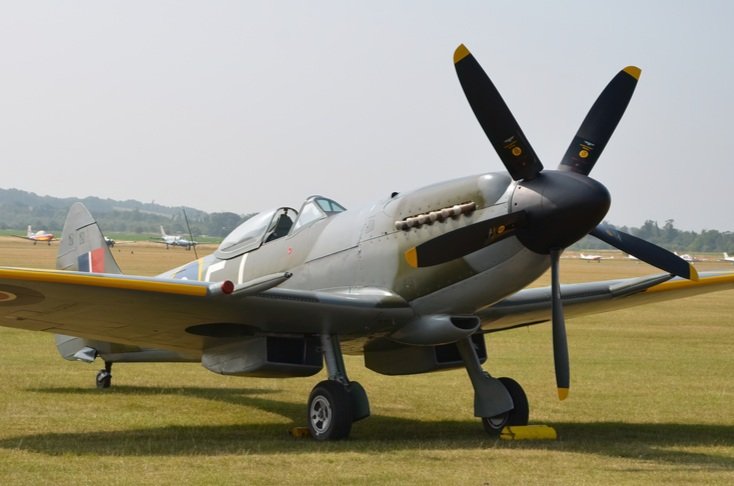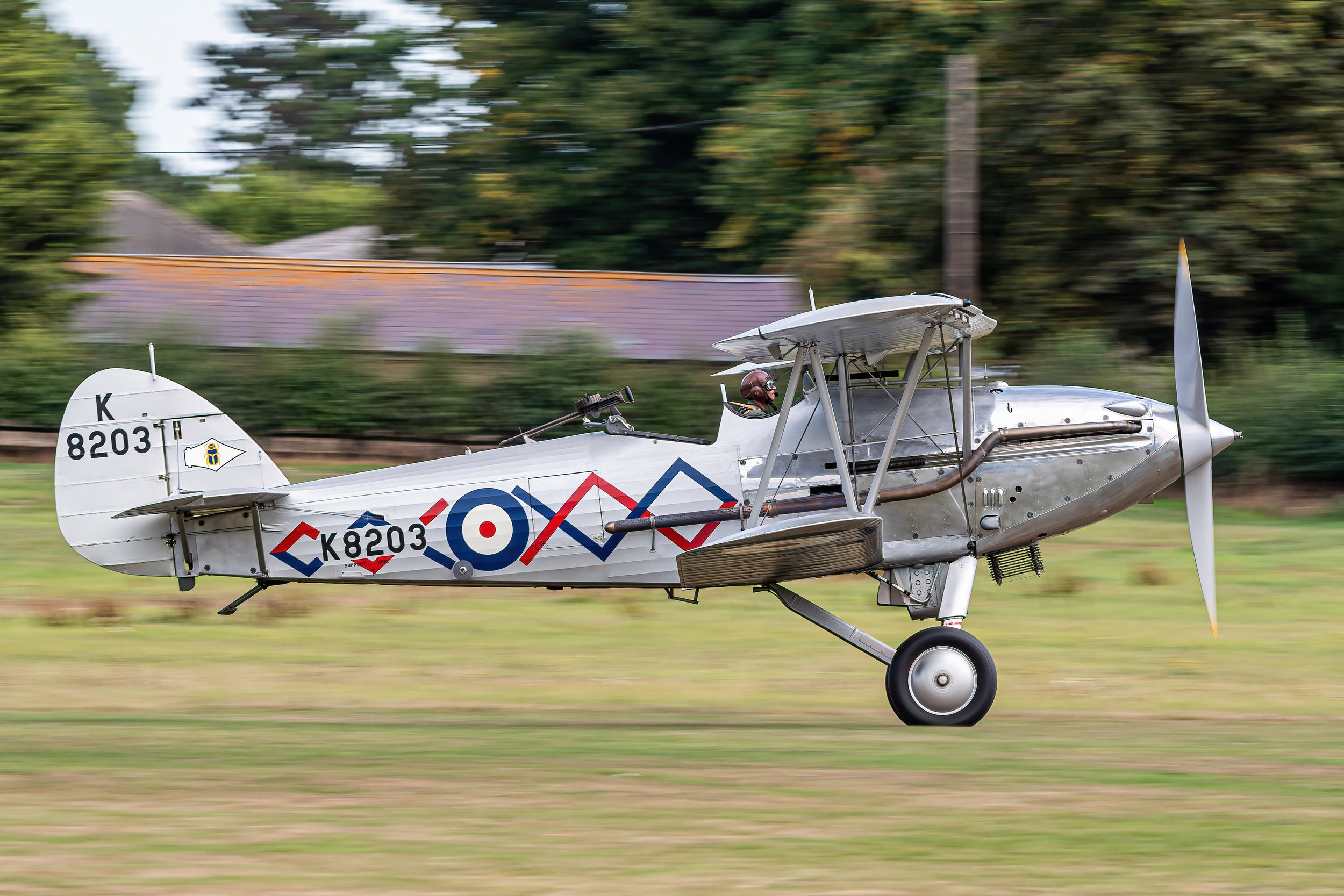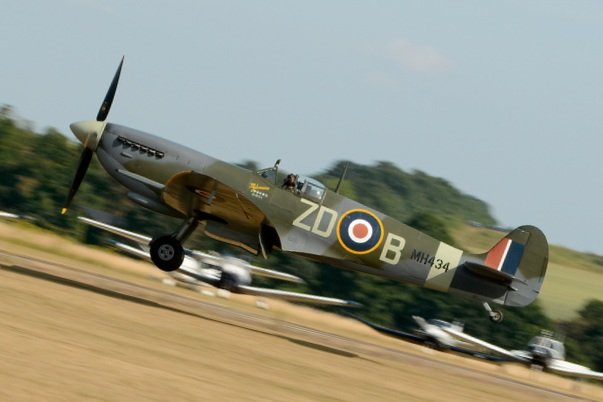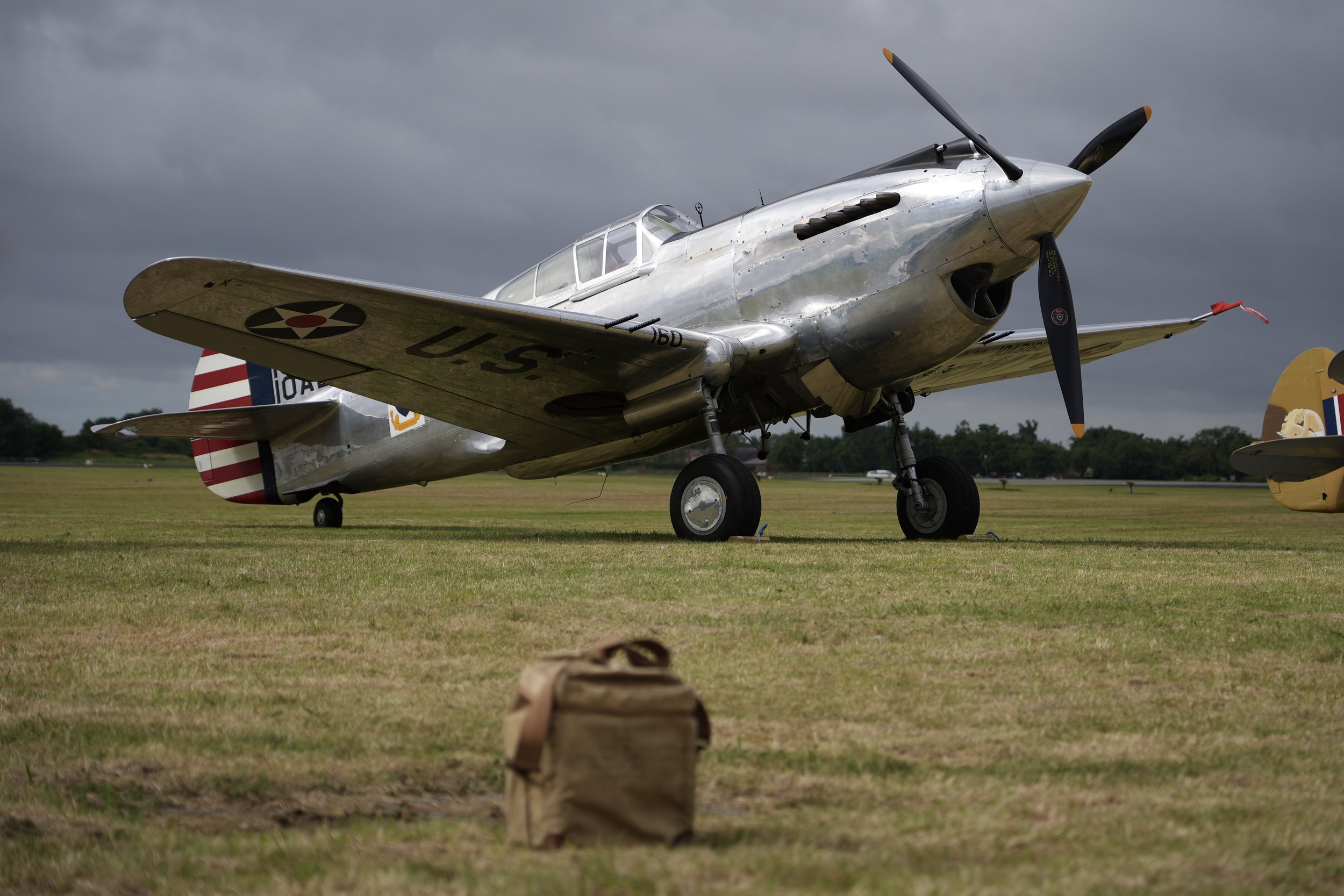Hurricane PZ865
Year built
1944
Aircraft
Hurricane IIC
Base
RAF Coningsby
Named The Last of the Many serial number PZ865 first flew at Langley, Buckinghamshire on 22 July 1944. Instead of being allocated to the RAF, it was retained by its manufacturer, Hawker Aircraft for trials work.
It moved in 1950 to the Hawker factory at Dunsfold Aerodrome and it was given the civil registration G-AMAU on 1 May 1950. It was flown into second place at the 1950 King's Cup Air Race by Group Captain Peter Townsend. At this time it was painted in Hawker Aircraft's dark blue colour scheme with gold lettering and lining. It was used as a chase plane during the P.1127 flight trials. The aircraft also appeared in the Battle of Britain film in 1968.
In 1972 the aircraft was refurbished and presented by Hawker's successor company, Hawker Siddeley, to the Royal Air Force's Battle of Britain Memorial Flight then based at RAF Coltishall, reverting to its RAF serial as identity.
Formerly painted as code JX-E to represent "Night Reaper" flown by 1 Squadron fighter ace Flt Lt Karel Kuttelwascher DFC during night intruder operations from RAF Tangmere, In 2010 the Battle of Britain Memorial Flight began a rebuild of Hawker Hurricane PZ865 which was carrying a new colour scheme, faithfully replicating Hurricane Mk IIC HW840, coded ‘EG-S’, of 34 Squadron, South East Asia Command during 1944, the personal aircraft of Canadian pilot, Flight Lieutenant Jimmy Whalen DFC. The aircraft is now painted to represent the 247 Sqn night-fighter, night-intruder Hurricane BE634 in 1942.
| Back to Top |
Hawker Hurricane IIC
The Hawker Hurricane is a British single-seat fighter aircraft of the 1930s–40s that was designed and predominantly built by Hawker Aircraft Ltd. for service with the Royal Air Force (RAF). It was overshadowed in the public consciousness by the Supermarine Spitfire's role during the Battle of Britain in 1940, but the Hurricane inflicted 60 percent of the losses sustained by the Luftwaffe in the engagement and fought in all the major theatres of the Second World War.
The Hurricane originated from discussions between RAF officials and aircraft designer Sir Sydney Camm about a proposed monoplane derivative of the Hawker Fury biplane in the early 1930s. Despite an institutional preference for biplanes and lack of interest from the Air Ministry, Hawker refined their monoplane proposal, incorporating several innovations which became critical to wartime fighter aircraft, including retractable landing gear and the more powerful Rolls-Royce Merlin engine. The Air Ministry ordered Hawker's Interceptor Monoplane in late 1934, and the prototype Hurricane K5083 performed its maiden flight on 6 November 1935.
In June 1936, the Hurricane went into production for the Air Ministry; it entered squadron service on 25 December 1937. Its manufacture and maintenance were eased by using conventional construction methods so that squadrons could perform many major repairs without external support. The Hurricane was rapidly procured prior to the outbreak of the Second World War in September 1939, when the RAF had 18 Hurricane-equipped squadrons in service. The aircraft was relied on to defend against German aircraft operated by the Luftwaffe, including dogfighting with Messerschmitt Bf 109s in multiple theatres of action.
The Hurricane was developed through several versions, into bomber-interceptors, fighter-bombers, and ground support aircraft as well as fighters. Versions designed for the Royal Navy known as the Sea Hurricane had modifications enabling operation from ships. Some were converted as catapult-launched convoy escorts. By the end of production in July 1944, 14,487 Hurricanes had been completed in Britain, Canada, Belgium and Yugoslavia.
Hurricane Mk IV was the last major change to the Hurricane. It included the introduction of the "universal Wing", a single design able to mount two 110 or 230 kg bombs, two 40 mm Vickers S guns, drop tanks or eight "60 pounder" RP-3 rockets. Two 7.7 mm Brownings were fitted to aid the aiming of the heavier armament. Despite persistent reports actually fitted with the same Merlin XX as the mark II. All Merlin 27 were modified to Merlin 25 and used in Mosquitoes, there were only 16 production Merlin 24 by the time over 300 mark IV had been delivered. The individual aircraft cards held by the RAF museum reports the final mark IV had Merlin XX. The radiator was deeper and armoured. Additional armour was also fitted around the engine. 524 was built by Hawker between December 1942 and March 1944.
| Back to Top |







| Back to Top |

































